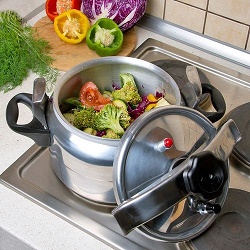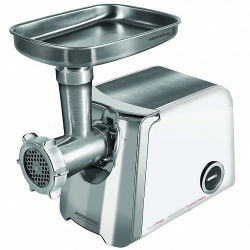We carry out repair of the coffee machine with your own hands
Automatic coffee brewing machine - literally a godsend for lovers of strong flavored drink. There are failures in the work of these modern devices, but a lot of trouble can be neutralized. Opportunities for self-repair depend on the brand and design of a particular model, but some problems are typical for all types of devices.
Content
Separately about common brands in the market
All models of coffee machines are arranged. about the same. And repair of some coffee machines is easy to do with your own hands: they just understand, you can clean, lubricate, inspect almost everything, and then carefully assemble.But brands have their own characteristics:
- Repair of coffee machines Saeco convenient and intuitive. Most models understand the same way, opening access to all nodes.
- Delonghi coffee machines are literally crammed with electronics, sensors, control systems. Do-it-yourself repair only involves troubleshooting simple problems. For elimination of serious problems it is worth contacting the service center.
- Krups devices with all their perfection - are dangerous. The heating elements are powered by a voltage of 220 volts, so the unqualified owner, trying to repair the coffee machine, can get a serious electric shock.
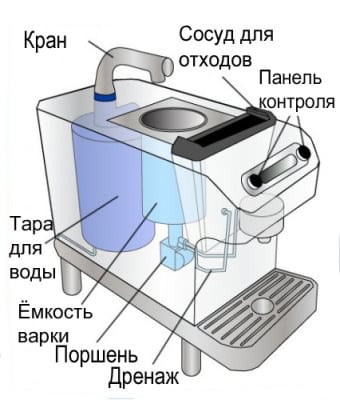
Schematic diagram of the coffee machine
Maintenance of any coffee machine should be carried out consistently, first determined with the simple causes of the malfunction, and then move on to more complex. Separately, it is worth noting that some Delong models can be disassembled only with special knowledge of the order of the process and the location of control systems.
De-energizing (pulling the plug of the device out of the socket) is necessary to avoid serious injury or irreversible damage to the device components.
How to disassemble
Part of the answer to the question of how to disassemble a coffee machine looks like this: be sure to stock up on a screwdriver with a long thin slot, various bits of bits, if there are capes for unscrewing hexagons, thin pliers will also be useful. In general, the process is as follows:
- The back wall is freed from mounting screws. They can be very different - under the cross, allen key, asterisk, recessed, with a semicircular or flat head.
- If you can not free the back panel, you should inspect the design for the presence of locks-latches. They are bent by a screwdriver with a long slot.
- After the release of the wall can be disassembled further, the process depends on the specific product model.
Some coffee machines give access to most components after the removal of the rear panel. Others will have to disassemble thoroughly. For example, for Saeko machines The full process looks like this:
- First, the front panel is opened, and the waste containers and the coffee supply unit are pulled out.
- The stand of the mugs is dismantled, it moves forward along with the pallet.
- The water tank is removed from the back, after removing it opens access to the lid of the grain compartment.
- To dismantle the coffee storage compartment, you need to unscrew all mounting screws and gently pull it out.
- Under the tank, you need to remove another fastening screw.
- Dismantling continues from the front, there is a pair of fasteners, access to which opens from the bottom.
- Behind the coffee bean compartment there is a last, deeply recessed mounting screw.
- When removing the top panel of the coffee machine, disconnect the water supply hose.
- Dismantling is completed by removing the front door.
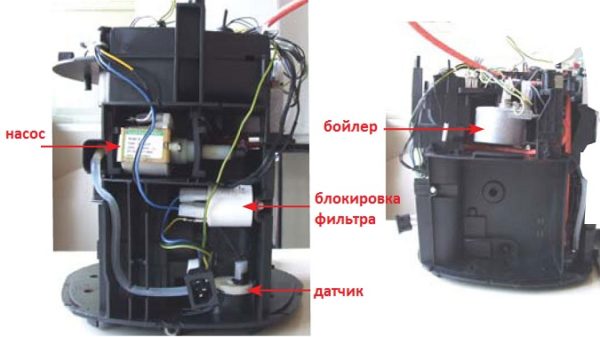
Main knots of the Saeko coffee machine
After such a disassembly can be reached to all device nodes. This will provide an opportunity to inspect, clean and lubricate the mechanism of the mill, to check the presence of voltage at key points of the electric circuit of the Saeco coffee machine.
Common problems and solutions
To bind to specific models of coffee machines does not make sense. Each brand and model has its own characteristics, and the repair of a particular coffee machine can have unique stages. For example, Gaggia Syncrony Logic machines use strictly roasted coffee beans for work, and a number of problems are associated with inadequate quality.Delonghi repair most often occurs due to the use of unfiltered water, the lack of procedures for periodic decalcification. Krups sometimes tightly stuck the capsules in the feed path. Therefore it is worth considering typical faultscommon to all coffee machines.
The machine does not turn on
The first step is to check the condition of the power cord, inspect for chafing, the presence of areas of sharp bending, killing. If damages or suspicions about their presence are revealed, it is worth replacing the power cable.
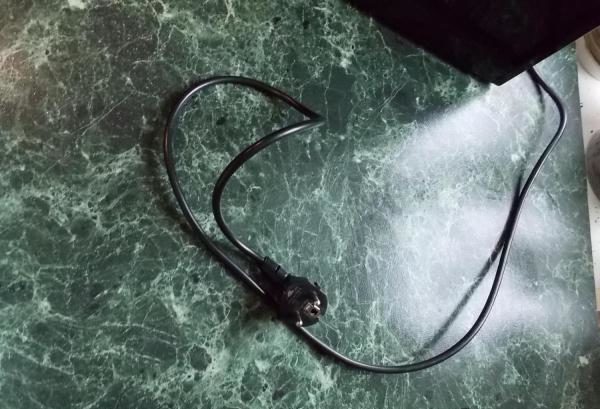
Water leaks in the area of the horn
Due to the calcination, the sealing ring is no longer tight. It is necessary to unscrew the horn, wash the rubber part with special means to remove calcium deposits. If the ring has lost elasticity or cracks - it must be replaced.
The device does not start
Errors on display, incomprehensible behavior during initial power-up can be caused. clogged contact groups. If the machine is equipped with a push-button console, it is worth trying to carefully remove the decorative panel with a thin screwdriver and check the condition, clean it with alcohol, clean it if the plates are open for access.
In cases where the machine is controlled by the touch panel, it is worth contacting the service center, problems can be both in the control unit and in the multi-layer contact group itself.
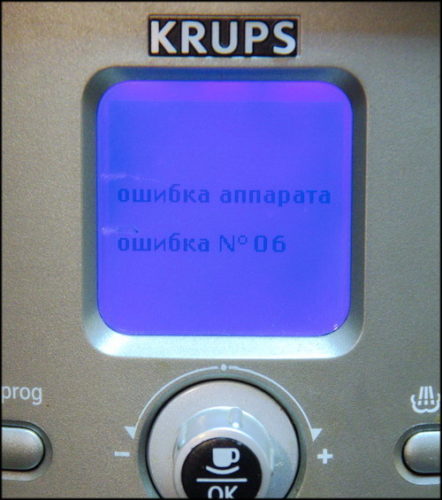
The reason that the device does not start and displays an error may be contamination of one of the sensors. If a particular model of the machine allows for complete disassembly and access for cleaning - it is worth doing this, also decalcification with special means will not hurt.
Coffee is not brewed properly.
A whole group of causes (reduced flow of water, incomprehensible sounds, hissing, disruption of the dosage) is associated with the accumulation of pollution and calcification. The first step is to run the water through the cappuccino device. This removes air plugs. If this does not help, decalcification should be carried out, followed by cleaning the nets with a stiff brush, tubes with a needle, removing all blockages, coffee and fat residues. But the reason may be in the failure of the pump - then you will need expert intervention, you should contact the service for a replacement.
No coffee grind
The coffee machine is disassembled, with the help of a vacuum cleaner and a brush, all the clogs of the mill are removed, after which the device is assembled and put on the maximum grinding mode.To control and final removal of residues of contamination, it is worth boiling several cups, and then setting the machine to normal. If it does not help, it is best to contact the experts, perhaps the matter is in mechanical damage to the elements of the construction of the mill.
There are problems for which elimination will be required replacement of individual parts. If you have the necessary technical skills, you can do it at home - for most modern coffee machines, spare parts can be found in stores, on the market, in service centers. But if there is water under the apparatus, and there is simply no ability to parse, replace tubes, and check for leaks - you should immediately disconnect the device from the network and call a specialist.

/rating_off.png)







